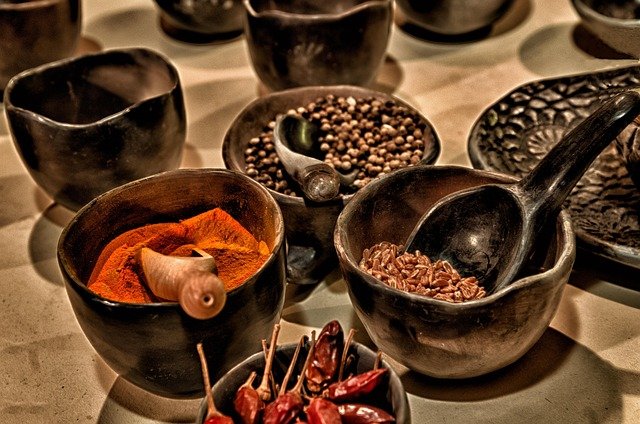Spice Blending: The Art of Creating Flavor Symphonies
Dive into the aromatic world of spice blending, where culinary creativity meets sensory exploration. This ancient practice has evolved into a modern art form, allowing home cooks and professional chefs alike to craft unique flavor profiles that elevate dishes to new heights. Join us as we uncover the secrets of spice blending and learn how to compose your own flavor symphonies in the kitchen.

Building Your Spice Palette
Before diving into blending, it’s essential to familiarize yourself with a wide range of spices. Start by exploring beyond the usual suspects like salt, pepper, and garlic powder. Experiment with warming spices such as cinnamon, cardamom, and star anise. Delve into the world of earthy flavors with cumin, coriander, and fenugreek. Don’t forget about the fiery kick of chili peppers or the brightness of citrus zests. As you expand your spice collection, take time to smell and taste each one individually, noting its unique characteristics and potential pairings.
The Science of Spice Synergy
Understanding how different spices interact is crucial for successful blending. Some spices naturally complement each other, like the classic combination of cinnamon and nutmeg in baked goods. Others may clash if not balanced properly. Consider the flavor profile you want to achieve and how each spice contributes to that goal. For example, if you’re aiming for a warm, comforting blend, you might combine cinnamon, ginger, and cloves. For a zesty, vibrant mix, try blending lemon zest, black pepper, and thyme. The possibilities are endless, and experimentation is key to discovering your own signature blends.
Techniques for Perfect Blends
Creating the perfect spice blend involves more than just measuring and mixing. The way you prepare and combine your spices can significantly impact the final flavor. Toasting whole spices before grinding can intensify their flavors and aromas. Using a mortar and pestle allows for better control over the texture of your blend, while electric grinders offer convenience for larger batches. Consider the order in which you add spices to your dishes as well – some are best added at the beginning of cooking, while others shine when sprinkled on just before serving.
From Classic to Contemporary
While traditional spice blends like garam masala and za’atar have stood the test of time, there’s always room for innovation in the world of spice blending. Modern chefs are experimenting with unconventional combinations, incorporating ingredients like dried seaweed, smoked salts, and even edible flowers into their blends. Don’t be afraid to think outside the box and create fusion blends that reflect your personal taste or cultural background. The key is to balance familiarity with novelty, creating blends that are both comforting and exciting.
Spice Blending Tips & Facts
• Always use fresh, high-quality spices for the best flavor
• Store your spice blends in airtight containers away from heat and light
• Whole spices have a longer shelf life than ground spices
• Experiment with different ratios to fine-tune your blends
• Keep a notebook to record your successful combinations
• Some spices, like turmeric, have natural preservative properties
• Blending your own spices allows you to control sodium levels
• Many spice blends can double as rubs for meats or sprinkles for popcorn
As we’ve explored, spice blending is a captivating journey that combines creativity, science, and cultural tradition. By mastering this art, you’ll unlock a world of flavors that can transform your cooking and delight your taste buds. Whether you’re recreating classic blends or inventing your own unique combinations, remember that the most important ingredient is your own passion and curiosity. So go forth, experiment boldly, and let your spice blends tell your culinary story.





